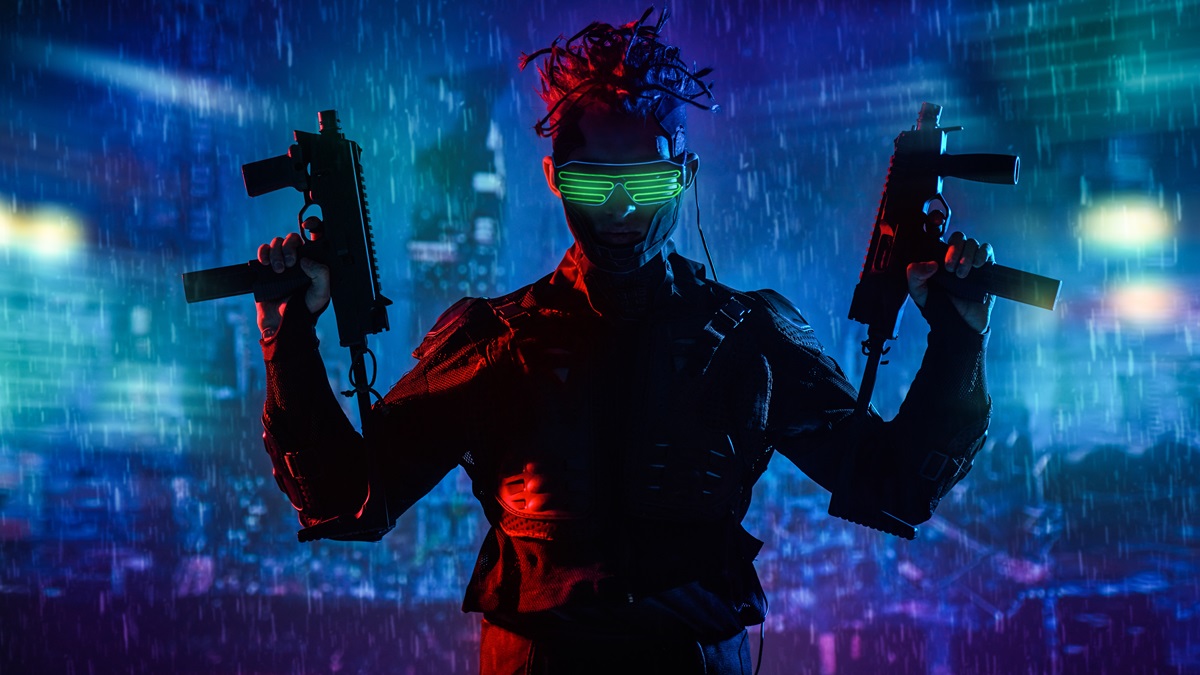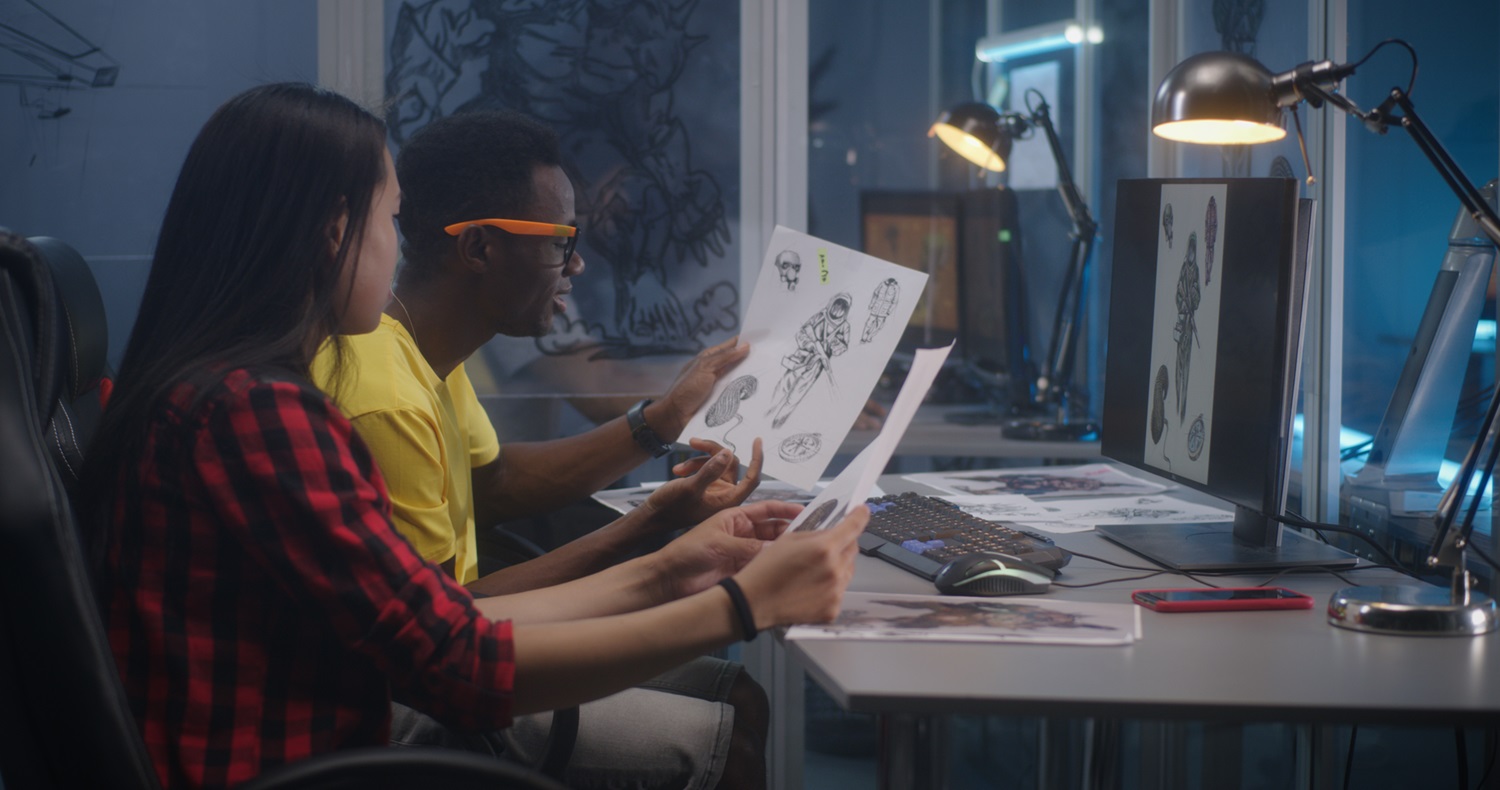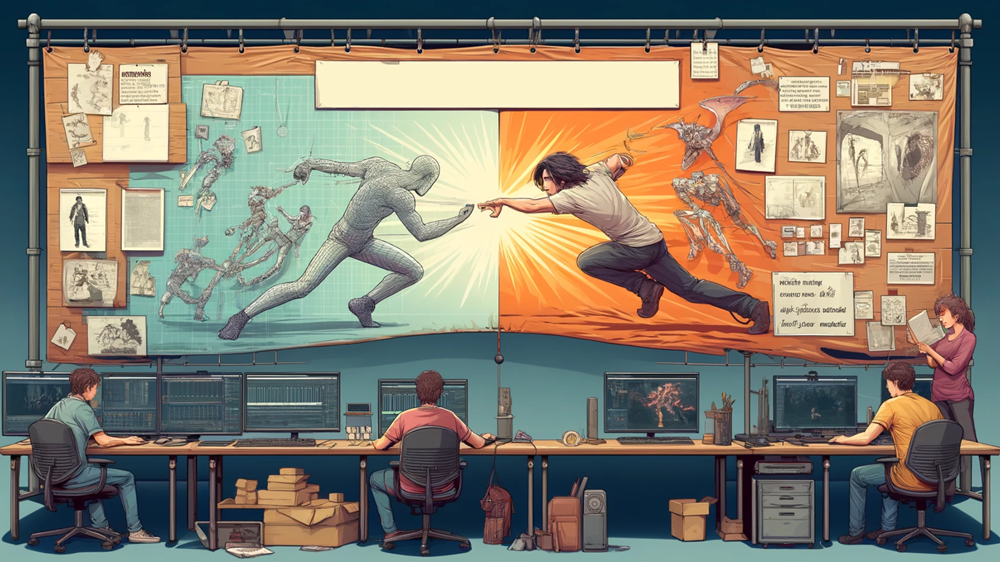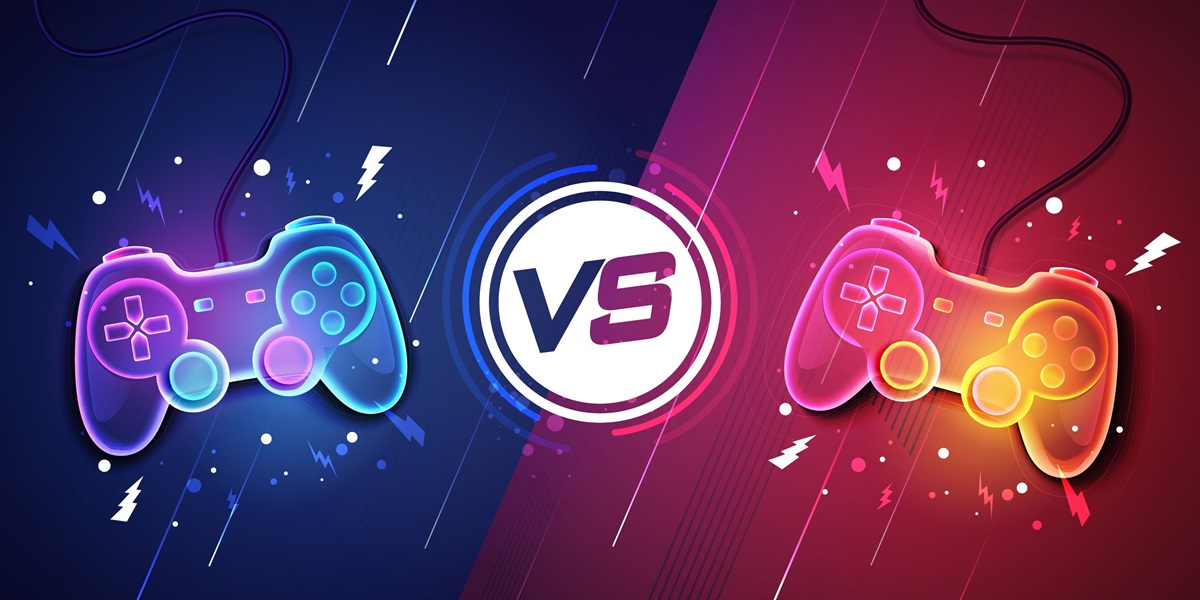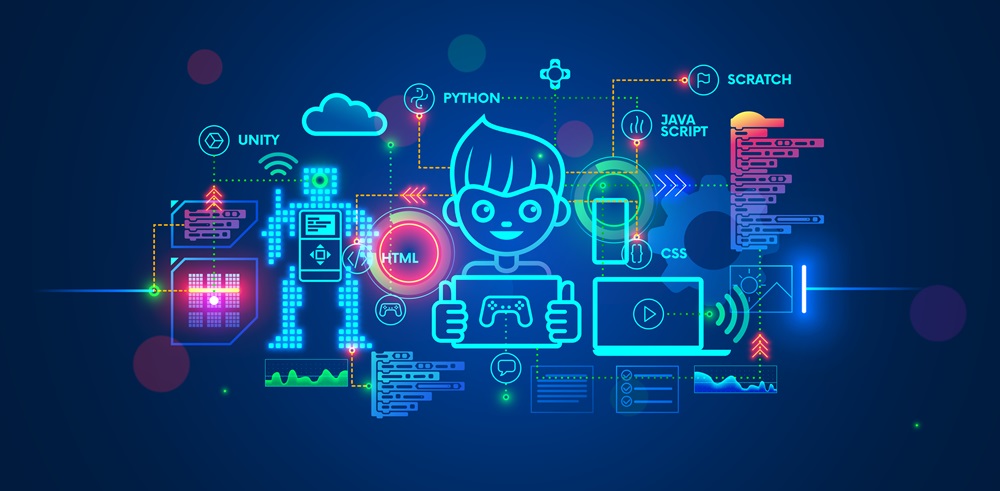All About RPG Weapons: Types, Tips and Tools for Creation
There is so much happening in the niche, dynamic world of RPGs weapons.
For instance, Guild Wars 2 is aiming to add more diversity and support for unique play styles with the addition of Thief's Axe and Staff for the Warrior.
The upcoming RPG, Rise of the Ronin, will offer a wide range of weapons and parrying mechanics to enrich your gaming experience; you will be able to wield a katana on fire and engage in aerial assassinations using a grappling hook and glider.
These RPG weapons play a critical role in the gaming economy and players love their weapons. In-game purchases especially are the most sought after avenue where money is spent.
- A report from Niko Partners showcased that a whopping $78.5 billion was spent in 2023 at in-game purchases in the Asia, Middle East, and North Africa (MENA) regions. Microtransactions accounted for most of these.
According to Newzoo, The most popular in-game items bought were in-game currencies, expansions or content packs, and gear, which contains weapons.
This weaponry makes the game more engaging and immersive, and provides depth to the gameplay. But wait a second, exactly what is an RPG weapon?
In a role playing game (RPG), you assume a character in a fictional setting and embark on quests and adventures. The armaments you use in this setting are your RPG weapons. They can be swords and axes, guns and bows, staffs and wands, and more.
The Lazy Shell, the Frying Pan, the Super Hammer, and the Head Cannon are some of the RPG weapons in the classic and current Super Mario (1985).
Let us talk about these different types of RPG weapons.
Categories of Weapons in RPG Games
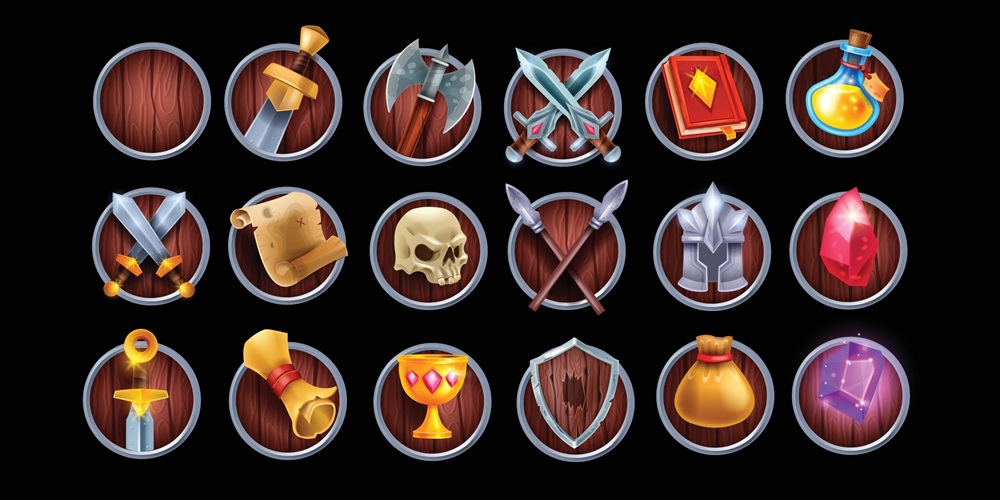
There are several genres of RPG weapons:
1. Melee: Close range weapons for direct physical combat; some examples are axes, swords, hammers, and daggers.
2. Ranged: To attack the enemy from a distance.; these include bows, guns, energy weapons, etc.
3. Magic: These weapons use mystical powers to unleash attacks or even provide benefits. They can take the form of a staff, wands, runes, or tomes.
4. Thrown: These are projectile weapons that can be thrown at the enemy from a distance. These can be knives, shuriken, axes, hatchets, spears, and javelins.
5. Special: These are unique weapons that have exotic certain abilities and characteristics. These include legendary weapons, artifacts, and transforming weapons.
As a game dev, you need to know the right tips and tricks when forming your unique RPG games weapons, no matter what kind.
Tips for RPG Weapons Creation
Following are some of the more important tips to consider when creating RPG weapons:
1. Setting and Theme: Your weapons should fit into the game’s general theme. They should be accurate to the time period, technology level, and game style.
2. Balance and Fairness: Ensure that no weapon dominates the gameplay. Each weapon should have its strengths and weaknesses, so none of them are too superior to the others.
3. Diversity: With a variety of melee, ranged, magic, etc. you can create a range of weapons, each suited to a unique playstyle and preference.
4. Unique Abilities and Effects: The weapons shouldn’t stand out from the rest of the game but they should stand out IN the game. Give each weapon a unique characteristic like elemental damage, status effects (such as poison or paralysis), bonus effects on critical hits, or special attacks that consume resources.
5. Progression: As the players advance through the game, give them the option to upgrade their weapons. This gives them a goal to achieve for their artillery.
6. Customization: Allow the players to customize their weapons with options like adding attachments, enchantments, or modifications that enhance the weapon's performance or unlock new abilities.
7. Lore: Give your weapon a reason for being there and a purpose to follow by adding a narrative to its origin and its significance to the game and the character.
8. Feedback: Keep improving on your designs to create a better version of the weapon. This can be done through player feedback that helps you learn of any balance issues or unintended consequences.
9. Aesthetics: It is simply a fact that all weapons must look ‘cool’ in their own way. Focus on aspects like shape, color, texture, and special effects to create visually impressive weapons.
10. Accessibility and Usability: Avoid complex game mechanics or instructions that make it difficult or frustrating to use the weapon. Ensure the learning curve for the weapon is intuitive.
Let us now take a look at the tools you can use to make the best RPG weapons for your game.
The Best Tools For RPG Weapons Creation
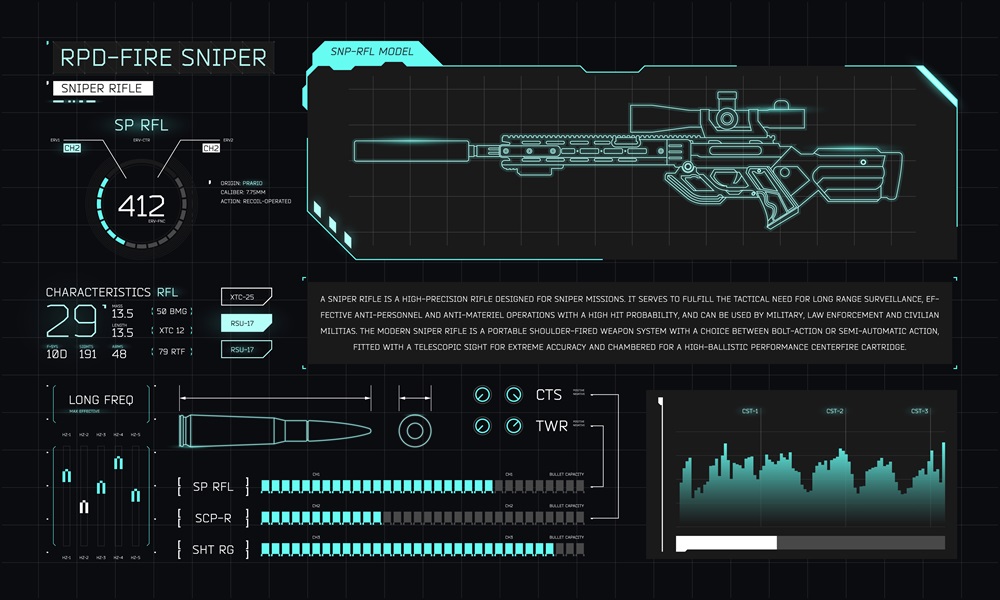
In this section, we list some of the best tools that you will definitely employ in this work:
1. Game Development Engines: Game engines like Unity, Unreal Engine, or Godot contain readymade frameworks to help you build your game, including the weapons.
There are tools for designing 3D models, implementing gameplay mechanics, and integrating assets into your game. Find which one works as the ‘best game engine’ for you.
2. 3D Modeling Software: Software like Blender, Maya, and ZBrush help you create detailed 3D models of your weapons with focus on the aesthetics including the shape, size, and texture.
3. Texture Painting Software: Software like Substance Painter, Photoshop, or GIMP allow you to add color, materials, and surface details to make your weapons more realistic.
4. Sprite and Pixel Art Tools: If your game is in 2D animation or uses pixel art, software like Aseprite, Pyxel Edit, GraphicsGale, or ProMotion is excellent for creating it.
5. Asset Marketplaces: Unity Asset Store, Unreal Engine Marketplace, Sketchfab, or TurboSquid provide several pre-made 3D models, textures, and animations for purchase/download for your game.
6. Sound Design Tools: The right audio will make your weapons come alive with slashes, wooshes, gunshot sounds, and more. Use software like Audacity, FL Studio, or Ableton Live to create and edit audio effects.
7. Version Control Systems: Git and SVN allow you to manage your weapons design work and enables you to collaborate with others, especially when it’s a big project with many contributors.
8. Community Forums: There is a plethora of forums and tutorials to help you improve your skills for free. Websites like Unity Forums, Unreal Engine Community, or Reddit's r/gamedev subreddit offer advice, resources, and feedback from experienced developers.
Iconic Weapons in Iconic Game Design Studio
With this look into the types, tips, and tools for RPG weapons creation, we believe you have the perfect base to start creating weapons that are fun, fair, and look amazing.
Let us know in the comments how this slice of gaming intelligence helped you!
If you need more help with your game development process, book a consultation with EDIIIE, a pioneering game design and development studio.
